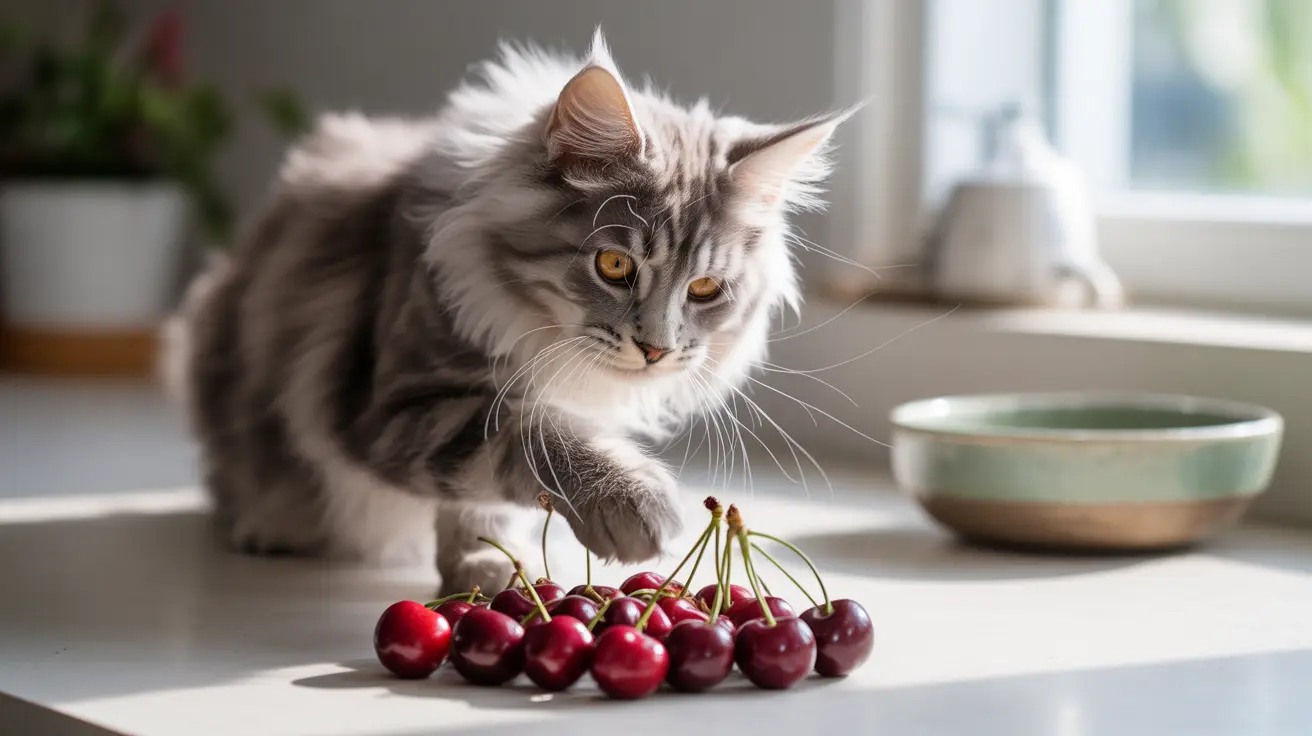If you've ever wondered about sharing your favorite summer fruit with your feline friend, it's crucial to understand that cherries pose significant risks to cats. While the flesh of cherries isn't inherently toxic, several parts of the cherry plant contain dangerous compounds that could be fatal to your pet. Let's explore why cherries should be kept away from cats and what to do if your cat accidentally consumes them.
The Dangers of Cherries for Cats
Cherries contain multiple components that make them unsafe for feline consumption. The most serious threat comes from cyanogenic glycosides, compounds found in cherry stems, leaves, pits, and blossoms that release cyanide when metabolized. Even small amounts of these parts can lead to severe poisoning in cats.
Toxic Components in Cherries
- Cherry pits (seeds)
- Stems
- Leaves
- Blossoms
These components contain concentrated amounts of cyanogenic compounds that can quickly become life-threatening for cats.
Physical Hazards
- Choking hazards, especially for curious cats
- Potential intestinal blockages requiring emergency surgery
- Dental injuries from attempting to chew hard pits
Signs of Cherry Poisoning in Cats
If your cat has consumed any part of a cherry except the flesh, watch for these symptoms:
- Difficulty breathing
- Dilated pupils
- Bright red gums
- Vomiting or diarrhea
- Confusion
- Collapse
Emergency Response
- Collect any remaining cherry material
- Contact your veterinarian immediately
- Monitor your cat's breathing and behavior
- Don't wait for symptoms to appear before seeking help
Safe Fruit Alternatives for Cats
While cherries are dangerous, some fruits can be safely offered to cats in moderation:
- Small pieces of apple (without seeds)
- Bananas
- Blueberries
- Watermelon (seedless)
Always remove seeds, pits, and rinds before offering any fruit to your cat.
Prevention and Safety Tips
- Keep fresh cherries in sealed containers
- Dispose of cherry pits and stems securely
- Don't grow cherry trees in cat-accessible areas
- Clean up fallen fruit immediately
- Store cherry-flavored products out of reach
Frequently Asked Questions
Are cherries safe for cats to eat, and which parts are toxic?
No, cherries are not safe for cats. While the flesh itself isn't toxic, the stems, leaves, pits, and blossoms contain dangerous cyanogenic glycosides that can be fatal to cats.
What symptoms should I watch for if my cat eats a cherry or cherry pit?
Watch for difficulty breathing, dilated pupils, bright red gums, vomiting, diarrhea, confusion, and collapse. These symptoms can indicate cyanide poisoning and require immediate veterinary attention.
What steps should I take if my cat accidentally ingests cherry stems, leaves, or pits?
Contact your veterinarian or pet poison control immediately. Don't wait for symptoms to develop, as quick intervention is crucial for successful treatment.
Can cherry pits cause choking or intestinal blockages in cats?
Yes, cherry pits pose significant choking hazards and can cause dangerous intestinal blockages that may require emergency surgery.
Are there any safe fruit alternatives to cherries for cats?
Yes, cats can safely eat small amounts of seedless watermelon, banana, blueberries, or apple (without seeds). Always introduce new foods gradually and in moderation.
Remember, while it might be tempting to share human foods with your cat, their digestive systems are designed for a meat-based diet. When in doubt about any food's safety for your cat, consult with your veterinarian first.






